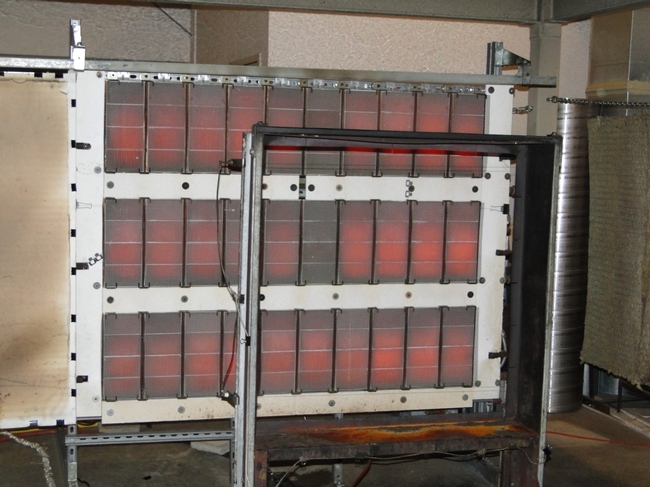The ASTM E05.14 Subcommittee on Exterior Fire met today. Task groups that are developing standard test methods to evaluate vents and decking products updated the subcommittee on progress made since the last meeting (these committees meeting every six months, in early December and early June). All of these draft standards are in some stage of balloting at the subcommittee or main committee level.
Professor Joe Urbas, University of North Carolina-Charlotte, gave a presentation to the subcommittee on a research project that he has been working on. Professor Urbas has been evaluating the effectiveness of wetting agents applied to vegetation and building components in resisting radiant heat exposures. The wetting agents he evaluated included water, foam, and a gel product. He tested the vegetation and building components (e.g., siding) with heat from a radiant panel immediately after and one hour after applying the wetting agent. In conducting this research project, Urbas has developed a performance measure that he calls the critical flux for fire growth (CFFG) – the heat flux that will result in the ignition and growth of fire on the vegetation or building material. The CFFG of a material is determined by exposing different specimens (of the same material) to different heat flux exposures, converging on the CFFG value. This has direct implications to homes and landscaping vegetation in wildfire prone areas and may provide a way to compare the performance of vegetation. Professor Urbas will be leading a task group to develop a standard test method using what he has learned in this research project.
